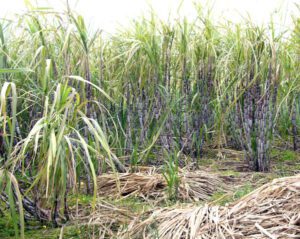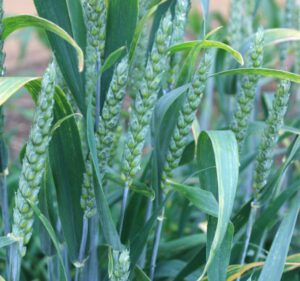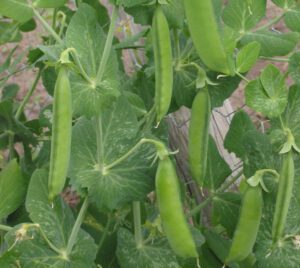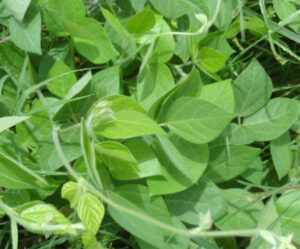Commercial beans farming is not a new business idea. People are growing beans in both small scale and commercially from the ancient time. Beans are actually a tender vegetable and very popular among people. You can even grow beans in your home garden.
Beans actually belong to Leguminaceae family and it is a very important vegetable in many countries around the world. It is also cultivated in many countries, mainly for the green pod. The bean plants have a climbing habit, so you need to arrange such system for commercial beans farming.
Green edible beans are mainly used in daily cooking as vegetable, and also used as animal fodder and also for soil improvements. The green beans are generally harvested with their beans in a pod before they are fully matured. They are more nutritionally comparable to other pod vegetables. That’s why they have very good demand in the local market.
However, both small scale and commercial beans farming is very easy and profitable. You can make good profits from this business.
How to Start Beans Farming Business?
Starting commercial beans farming business is very easy and simple. You can start this business even if you are a beginner.

Although, you should learn practically from existing farmers if you are a beginner. Here we are trying to describe more information about starting beans farming business.
Step 1. Site Selection
Bean plants can be grown in a wide range of soil types. Generally the Indian beans thrives best in loamy, silty loam and clay loam soils. Try to select the soil with good drainage system. The pH range between 5.5 and 6.0 is considered ideal for bean plants.
Step 2. Land Preparation
Cool climatic condition and fertile soils are necessary for good beans production. It will be better if the land is rich in organic matter, or you can add as much organic matter as you can while preparing the soil.
Add enough farmyard manure or any type of good compost. Doing this will make the soil fertile. For commercial production, give 2-3 ploughing for bringing the soil at fine tilth. Then make the field level so that you can avoid water stagnation in the main field. Add compost or farmyard manure at the last ploughing.
Step 3. Climate Requirement
Most of the common beans generally grow within a range of temperatures of 17.5° C to 27° C. Temperature above 30° C is not good for beans farming, and may cause the bean flower buds to fall.
But the French beans thrives within the ideal temperature range of 20° C to 25° C. And can also be grown in temperatures ranging between 14° C and 32° C.
Step 4. Varieties/Cultivars
There are many different varieties/cultivars of beans available throughout the world. The world genebanks are currently holding about 40,000 different bean varieties. But not all these varieties are used for commercial beans farming business.
Only a few varieties are grown for human consumption. Among these varieties two common types of beans are grown commercially. And these two types are bush beans and pole beans.
The pole bean varieties will vine and need to be grown up stakes or trellises. But the bush beans tend to grow more compactly and generally do not require support. Growing the bush beans is much easier that the pole beans. But the pole beans are very hardy, disease resistant and generally produce more beans.
Some common/popular and mostly cultivated bean varieties are Lablab, Yardlong, Runner, Lima, Pinto, Black, Green, Butter, Yellow, Soybeans, Peas, Black-eyed etc. You should select those varieties which grow well in your area. You can consult with a local farmer for more information.
Step 5. Purchase Seeds/Plants
Bean plants are grown from seeds. You can purchase the seeds easily from any of your nearest seed stores or nurseries. You can also consider ordering online.
Step 6. Planting
Prepare the land perfectly before planting beans. Planting system is different depending on the type of beans. Whichever variety you choose, soak the seeds in clean water for 24 hours before sowing. Doing this will help in faster germination.
Planting Pole Beans
Pole beans will vine and they need to be grown up stakes or trellises. These types of beans require staking with supports and you can use fence, trellis, bamboo, loader or string for this purpose.
Corn or sunflower stalks can also be used for bean supports. Ensure that you have the support ready for the bean plants to climb on before planting pole bean varieties.
Planting Bush Beans
It’s actually very easy to grow the bush bean varieties. They generally require less care and maintenance for growing and generally don’t require any support. They are bushy plants and grow close to the ground.
The bush bean varieties generally produce early crop. For planting in rows, keep 1.5-2 ft space between two rows and around 0.5-1 ft space between two plants.
Step 7. Caring
The bean plants are generally very hardy. They generally grow well and require less caring and other management. Although, taking additional caring will help the plants to grow well and produce more. Here we are trying to describe more about the caring process of bean plants.
Fertilizing
Adding organic fertilizers while preparing the soil will be enough for the bean plants. But for commercial production, you have to apply some chemical fertilizer.
Apply fertilizer dose of nitrogen at the rate of 6kg per acre (urea at the rate of 13kg per acre) and phosphorus pentoxide at the rate of 8kg per acre (single super phosphate at the rate of 50kg per acre).
Watering/Irrigation
Adequate moisture in the soil is a must for beans farming business. So, you have to water the plants on a regular basis. Water the plants at least once a week or more frequently during dry weather.
Mulching
Mulching helps to retain moisture into the soil. It also helps to prevent weeds. Always try to use organic materials for mulching (such as grass clippings, composted leaves, straw etc.)
Pruning
Pruning is not a mandatory for beans. But you can cut the top of the plant when there are several true leaves. Doing this will encourage the plant to grow new vines.
Weeding
Frequent weeding and hoeing are required to keep the field weed free. 1-2 hoeing are required after 30-50 days of sowing to control the weeds. Mulching is also an effective way to reduce soil temperature along with weed control.
Step 8. Control Pests and Diseases
Like many other commercial crops, the bean plants are also susceptible to many pests and diseases. Here we are trying to describe more about the common pests and diseases of bean plants. Common pests and diseases and their controlling methods are mentioned below.
Blister Beetle
Blister beetle damages the flower and blocks the pod formation. Spraying of deltamethrin 2.8 EC at the rate of 200 ml or indoxacarb 14.5 SC at the rate of 200 ml or acephate 75 SP at the rate of 800g per acre in 80-100 ltr of water will be effective.
Leaf Stem Rotten
Leaf stem rotten disease damages the stem and as result there is low seed yield and it’s quality also decreases.
Powdery Mildew
Patchy, White powdery growth appear on lower side of leaves. Avoid water lodging in field and keep the field clean for preventing this disease. To Control spray with Hexaconazole along with sticker at the rate of 1ml per Ltr of water.
Yellow Leaves
Yellow leaves disease appears firstly as a red spot and then gradually it turns into reddish brown and then yellow. It will decrease the leaves production. For treating this disease, you have to remove the infected portion as early as possible.
Yellow Mosaic
Light and green patches are observed on leaves in yellow mosaic disease affected plant. Plant growth get stops in early stage. For controlling, spray Acephate 75SP at the rate of 600gm per 200Ltr or Methyl demeton 25EC at the rate of 2ml per Ltr of water.
Wilt
Moist and poorly drain soil causes wilt and it is a soil borne disease. To control Wilt, Drench nearby soil with Copper oxychloride at the rate of 25gm or Carbendazim at the rate of 20gm per 10Ltr of water. To control Wilting of plants due to root rot do drenching with Trichoderma bio fungus at the rate of 2.5kg per 500Ltr water, near to roots of plants.
Aphid
Aphids suck sap from the leaf and the plant suffer. For controlling aphids, spray Acephate 75SP at the rate of 1gm per Ltr or Methyl demeton 25EC at the rate of 2ml per Ltr of water.
Larva
Larva destroys the leaves and pod of the plant by feeding themselves on the leaves and bore in the pod.[1]
Lizard
Lizard causes cuts to the leaves and buds of the plant. Spraying of pesticide around the plant will help to remain lizard away from the plants. Spraying must be done in evening.
Mite
Mites are widely distributed pests observed throughout the world. Spray of Chlorfenapyr at the rate of 15ml per Ltr or Abamectin at the rate of 15ml per Ltr are found effective.
Pod Borer
Pod borer damages the pod by eating the young seeds or by moving on one pod to another. Spraying of indoxacarb 14.5 SC at the rate of 200 ml or acephate 75 SP at the rate of 800 g or spinosad 45 SC at the rate of 60 ml in 100 litres of water per acre is given to treat pod borer.
Small Larva
Small larva damages the leaves and green stems by feeding themselves. Spraying of Ekalux 25 EC at the rate of 200ml in 80-100 ltr of water or Nuvan 100 at the rate of 200ml in 80-100l of water is used to treat hairy caterpillar.
Thrips
Thrips are commonly observed pest. Use organic methods first for controlling. But if incidence of thrips is more, then take spray of Imidacloprid 17.8SL or Fipronil at the rate of 1ml per Ltr water or Acephate 75% WP at the rate of 1gm per Ltr.
Step 9. Harvesting
Most of the beans can be harvested after 55-60 days from planting seeds. And you can start to harvest the beans generally after 20-25 days after the plants start flowering. Simply pull the pods off the plant by hand. You can also use scissors or pruning shears to cut the pods off the plant.
Yield
It’s very difficult to tell the exact amount and depends on many different factors including season, variety etc. But the average yield is 10-12 tonnes of green pods per hectare.
Step 10. Marketing
Marketing beans is very easy and simple. You can easily sell your products in the local market. Although, you should set your marketing strategies before starting this business.
These are the steps and ways for commercial beans farming business. Hope this guide has helped you! Good luck and may God bless you! 🙏







Thank you for sharing. How many tones can I get from sugar beans per hactare
Actually, it’s really really very hard to tell the exact amount, because it depends on many different factors. You can consult with some existing farmers in your area for having an average recommendation. Thank you!